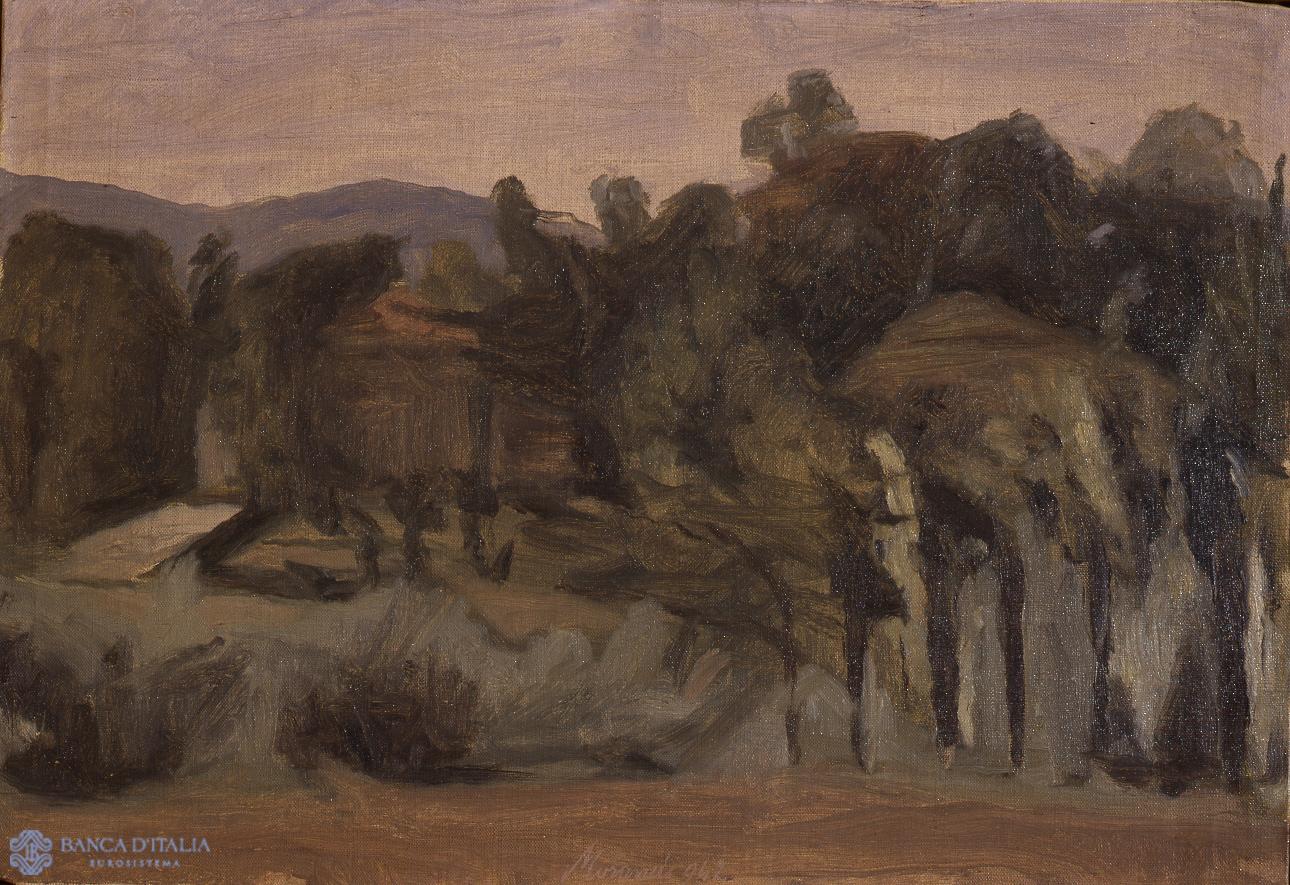Fields and sky, trees and houses: but in the end, the composition of this landscape depicts only the wind, which blows every which way, wiping out clarity of form, bringing together in a single tone the various hues of green and ocher. Morandi is at Grizzana, the small village near Bologna where he generally spent summers. Here and in nearby Marzabotto, within not many months the Nazis would conduct a series of bloody massacres; but now it still offers an intermittently serene refuge for the artist, who had been briefly imprisoned in Bologna for his anti-Fascist sympathies.
In these wartime years Morandi, taken from his home in Bologna and the unchanging set of objects used to construct his still lifes, devoted increasing attention to landscape. And this canvas fully attests to the major speed-up in his painting, which bends and arches with surprising creakings, brusque inflexions. On the heels of his triumph at the 1939 Quadriennale in Rome, in his “towns in war” paintings in 1942 and 1943 (which Roberto Longhi judged to be the pinnacle of his art), Morandi appears to be aiming at anything but the compositional perfection displayed at the Quadriennale. The colour becomes tormented, the light a series of flashes, the material practically eroded by a brush that races across the canvas in swift, breathless sweeps, while the spatiality of the painting, earlier so square and impervious to emotion, becomes disorderly, convulsed.
Giorgio Morandi, Paesaggio
Paesaggio
Painting
20th century AD
Landscape

Artist
Date
1942
Material and technique
Oil on canvas
Measurements
36 x 53 cm
Compiler
Fabrizio D'Amico
